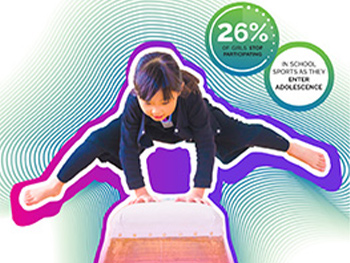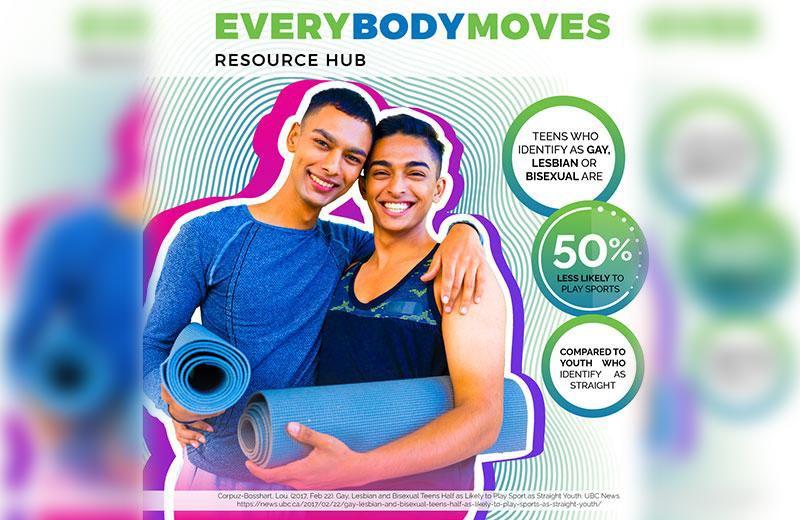This story was contributed by the EverybodyMoves Resource Hub.
Jeremy Walia has been playing in his local hockey association for five years and has built friendships with many of the kids in his division. After much deliberation and support from his coach, he decides to come out to them as gay. Although most of them are supportive, Jeremy notices a few that are uncomfortable, including one of his oldest friends, Thomas Chen. After a game one day, Thomas approaches Jeremy and asks if he could go to a separate change room. Jeremy is hurt and disappointed, and asks his coach for help. His coach is concerned but doesn’t know how to respond to the situation.
Because sports are often considered to be a traditionally masculine activity, they can be an extremely intimidating space for people who identify as LGBTQI2S+. This stereotype tends to stigmatize women, girls, and people who are LGBTQIA2S+. According to a recent study by UBC and the McCreary Centre Society, BC teens who identify as bisexual, lesbian, or gay are less than half as likely to join coached sports than straight youth.
Moreover, youth who don’t participate in sports are less likely to be physically active as adults, which can impact their physical and mental health in the long run. For instance, If a girl doesn’t participate in sports by 10 years of age, there’s a 90% chance she will not be physically active as an adult.
To counter the discrimination and bullying that many players face, both within youth and adult sports, experts recommend anti-homophobia measures. The good news is that many sports organizations have already come together to put such measures in place; one example is the NHL’s partnership with the You Can Play Project.
For organizations seeking resources to improve gender equity in sport and recreation, EverybodyMoves is excited to offer a multitude of tools, tips, and guidelines. Whether you’re involved in organized sport, or run a drop-in program at the community centre, everyone deserves a safe space to play and thrive!
With the help of viaSport’s LGBTQIA2S+ scenario guidelines, Jeremy’s coach is able to better understand the shame and stigma that Jeremy was facing, as well as the stereotypes and fears that Thomas had learned. During the next practice session, the coach holds a team meeting and communicates expectations around inclusion and diversity. The coach takes time for questions and tells everyone he is available for support.
Resources
EverybodyMoves Hub also offers a wide range of resources specifically focused on LGBTQIA2S+ and physical activity. Check out the ones highlighted below:
This policy and checklist created by Right to Play explicitly support gender equality and the principles expressed in the Convention on the Elimination of Discrimination Against Women (CEDAW) and the United Nations Convention on the Rights of the Child (UNCRC).
#LevelTheField is a province-wide movement that is working to create a more inclusive sport culture in BC by targeting under-represented groups, such as women and girls, persons with disabilities and those who identify with the LGBTQI2S community. You can sign up to follow the campaign at viaSport.
- #ElleBouge #SheMoves Campaign

Encouraging girls to stay in sports through adolescence is important for physical and mental health.
The #ElleBouge awareness campaign, developed by the Alberta Francophone Sport Federation (FSFA), aims to make women aware of physical activity and its benefits. #ElleBouge is a campaign that aims to encourage women to be more physically active. It is one of the first of its kind to be presented in Canada and both in French and English.
This campaign showcases Francophone women of different sizes, ages, backgrounds and with different sports abilities, who have overcome their fear of being judged and found their own way of doing physical activity
The City of Vancouver has created an introductory video on why using appropriate pronouns for transgender people is integral to creating an inclusive and safe environment for all.














Comments